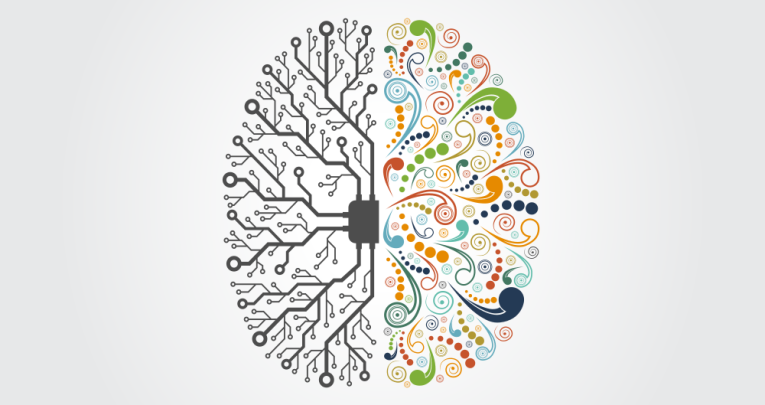How The Brain Really Works In Learning – Why Neuromyths Are Holding Education Back

Growth mindset? Bloom's Taxonomy? It's not education gospel, says Scott Davies

- by Scott Davies

Educational psychology in teaching practice is a hotly contested issue within education. As personal development is becoming an increasingly important part of being a teacher, research into educational psychology and understanding how children and adolescents best learn is being focused in more prominently. Despite this, there are many false ideas, or neuromyths, about how the brain works in terms of learning.
One of the issues with neuromyths is that despite mounting evidence to the contrary, they persist and have become accepted not only within education circles but more broadly. Though falling out of favour, ideas such as humans only using 10% of their brain and learning styles persist to this day. Other theories, such as Dweck’s Growth Mindset, while more empirically valid, are misused and incorrectly applied, in ways which can be detrimental to students’ learning.
Among the most persistent of these neuromyths is that of learning styles. The learning styles myth is based around the idea that students learn based primarily through a single one of their senses. These are often categorised as visual, auditory or kinaesthetic (physical activity based) styles of learning. It is believed, according to this theory, that if students learn in the style most suited to their personal preference, more learning will take place as a result.
As of 2012, a staggering 93% of teachers in the United Kingdom still believed in this theory, despite the lack of evidence for it. The learning styles myth can be particularly damaging for students.
For example, a student who is struggling with reading but is assumed to be a strong ‘auditory’ learner may be given audiobooks to listen to in lieu of reading a text. Though well-intentioned to help the student understand a text, this denies the student a chance to practice their reading skills. The myth of learning styles also has negative implications for planning and preparing lessons.
An adherent to this myth, believing they must present all learning activities and materials in multiple ways regardless of context, increases their workload significantly. It is well-known that there is an alarming problem with teachers being over-worked as it is. Pedagogical practices which mandate significant differentiation, regardless of the teaching context, increase this workload further.
Another neuroscience theory with dubious evidence to back it up that is prominent in schools is Growth Mindset, popularised by Carol Dweck. Dweck’s theory posits that there are two mindsets to learning: ‘fixed mindset‘ and ‘growth mindset’. Though there is evidence to support the theory overall, it has not yet been determined whether it applies in the context of educating children and adolescents.
A 2016 survey by the Edcuation Week Research Center has shown that 80% of teachers who implement Dweck’s findings do not make effective changes in the classroom.
Recent examination of Dweck’s original research has found some key issues with the theory. For one, it has been not been able to be replicated. This fact alone is a salient point when drawing conclusions from this research. If a study is not able to be independently replicated, the validity of its findings is immediately diminished to a significant degree. It is important, therefore, to apply scepticism to theories such as Dweck’s Growth Mindset and consider the research behind them before implementing them in the classroom environment.
Bloom’s Taxonomy is a further example of a persistent idea in educational psychology which is misused and abused.
Bloom’s Taxonomy is a theory which states there are six levels of thinking; remembering, understanding, applying, analysing, evaluating and creating.
Conventional wisdom surrounding the taxonomy is that there are ‘lower-order’ and ‘higher-order’ levels of thinking. Remembering is often considered to be the lowest, or most basic level, and creating is considered the highest.
One of the issues with the way Bloom’s Taxonomy is understood in the modern teaching context is the rigid hierarchical thinking applied to it. The assumption that some forms of knowledge are inherently ‘higher’ or ‘lower’ order is misguided and can be detrimental to learning.
In many instances, Blooms’ Taxonomy has become a rigid means of sequencing content from lower to higher order thinking, rather than as a means of assessment, as was originally intended by Benjamin Bloom when he originally devised the theory in 1965.
As with the misuse and adherence to the other learning styles and neuromyths mentioned in this article, this has negative implications for lesson planning and pedagogy.
Evidence-based and scientific approaches to education are essential to ensure students are able to learn and teachers able to teach as effectively as possible. As teachers, we must cast a critical eye over neuroscientific ideas and learning theories and ensure there is sound evidence and value in implementing these ideas within the classroom.
Scott Davies is a pre-service teacher from Adelaide, Australia, currently studying a Master of Secondary Education at the University of South Australia. You can find him at scottjdavies.wordpress.com and follow him on Twitter at @scottjdavies01.










